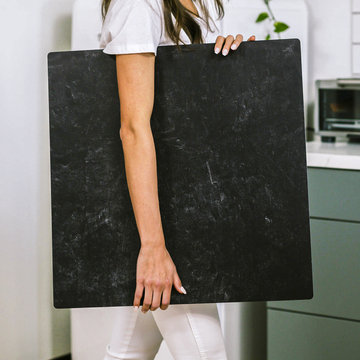It's easy to get swept up in the latest food photography trends-marble slabs, rustic wood, sleek concrete-but have you ever wondered why certain surfaces make your dishes look magical, while others fall flat? The truth is, every food photo is shaped as much by physics and material science as by props and styling. If you want your next product or recipe photo to stand out, it's time to look beneath your plate-literally.
The Physics of Reflection: Not All Surfaces Play Nice with Light
When light hits your backdrop, it doesn’t just stop there. The way your surface reflects (or diffuses) light can quietly make or break your shot.
- Matte Surfaces: These are your go-tos for a soft, even look. Wood, stone, and honed ceramics scatter light, reducing harsh glare and gently defining your food’s shape.
- Glossy Surfaces: Think glass, enamel, or polished marble. These bounce light right back, creating dynamic highlights. Used wisely, they make syrup glisten and fruit gleam-but they can also expose every stray reflection, including your camera or a nearby window.
Curious about upping your skills? Try placing a translucent slice of fruit on a glossy surface and watch how it comes to life. Then, shift to matte and notice the change. The difference is more than aesthetic; it’s scientific.
Color Casts: Hidden Tints That Change Everything
Ever wondered why your vanilla frosting suddenly looks blue, or your bread seems orange? The subtle color cast of your surface is often the culprit. Cheap backgrounds can skew color temperature, making editing a headache and dulling your food’s authenticity.
High-quality surfaces-like those designed for professional product photography-are engineered for color neutrality. This matters for consistent branding, especially if you’re selling online or building a recognizably clean look.
Texture Up Close: Beyond What Meets the Eye
Texture isn’t only about what you can see; it’s about how your backdrop interacts with light at the microscopic level. Even “smooth” surfaces have a unique micro-texture that subtly diffuses reflections. This is why:
- Boldly textured woods or stone bring dimension to rustic foods, creating cozy shadows and tactile warmth.
- Subtle, fine texture helps pastries or candies keep their crisp detail, adding realism without distraction.
If you’ve ever shot the same slice of cake on both a professional backdrop and a regular printout, you can attest: the difference in depth and realism is night and day.
Why Thickness and Edge Details Matter
Have you ever noticed that food on a flimsy sheet or paper can look like it’s floating? That’s because real-world surfaces have thickness and edge shadows. Pro photography boards mimic these details, grounding your scene and enhancing realism-especially when you build scenes with two surfaces to create a tabletop and a “wall.”
A thoughtful bevel or shadow along the edge tricks the viewer’s eye, making a home-studio setup feel like a candid shot in a high-end bakery or modern kitchen.
Cleanability: The Unseen Superpower
It’s not glamorous, but it’s essential. If you’re shooting food, you’re going to get messy-and cleaning up shouldn’t ruin your favorite surface. Professionally engineered surfaces are built to resist stains, moisture, and repeated cleaning. This kind of durability protects your investment and keeps your photos consistent over time.
- Save time in post-production by not having to retouch stubborn, permanent stains.
- Keep your visuals professional across dozens-or hundreds-of shoots.
Creative Potential: Surfaces as Sets, Not Just Backgrounds
The best photography surfaces aren’t flat. Modular, multi-angle designs allow you to create corners, risers, and even pseudo-rooms, adding depth and context to your shot. Pay attention to how textures and veining line up at edges-the most realistic surfaces make transitions seamless, so viewers stay focused on your food, not your props.
Bringing It All Together: A Backdrop That Works as Hard as You Do
Before your next shoot, pause to consider the science behind your backdrop. Ask yourself:
- How does this surface shape the light and shadows on my subject?
- Is the color cast neutral or will it complicate my editing and branding?
- Does the texture help or hinder the food’s story?
- Can it handle a real kitchen’s spills and stains?
- Does it look real from every angle, anchoring my scene?
Your answer could make the difference between “good enough” and “genuinely scroll-stopping.” For creators, small business owners, and anyone serious about presenting food beautifully, understanding the hidden science of surfaces is your secret weapon. The next great photo may not start with a new camera or lens-but with a smarter backdrop.
Want more insights on surface materials, DIY hacks, or lighting tips? Stay tuned for our next deep dive-or drop your surface struggles in the comments below!



